The Norse enjoyed a well-balanced diet in ancient times. Like other civilizations that operated under a feudal economy, the Vikings had access to various foods, including meats, fish, vegetables, and fruits. Despite the harsh conditions in their native land, they were regarded as master homesteaders with outstanding ingenuity and skill. They cultivated a wide range of crops, grew plants, and raised animals.
While modern cinema depicts Vikings as extremely fond of grilling their food over open fires, history reveals that their diet is far from that. As foods were seasonal, Norse men and women learned ways to preserve food and minimize waste. The Vikings knew how to make the most out of the food they raised. They practiced sharing their food as they believed their victory in conquests required a group effort.
Herbs and Spices

Viking households had a kitchen garden that grew a wide range of herbs, including thyme, coriander, dill, mustard, parsley, horseradish, and Norwegian celery. Dill was one of the most common herbs they grew and was used to add flavor to fish dishes and other types of meat or vegetable stews. Salt was also their primary seasoning to preserve meats and fish in brine. They integrated the use of different spices, such as pepper and cinnamon, after encountering Eastern civilizations during their voyages.
The Northmen typically grew herbs in spring and harvested them in later summer and fall. It was the responsibility of women and children to collect the herbs. They were either used instantly in food preparation or dried and stored for future use.
Beer, Mead, and Wines

Vikings, both young and old, drank alcohol daily. Fermented ale had relatively low alcohol content, so even children were permitted to drink Syra- a type of ale that was an alcoholic dairy-based by-product of Skyr or Norse yogurt. Apart from believing that ale had medicinal properties, alcohol was a safer drinking option than water. The warriors also brought large volumes of beer during their sea voyages, staying fresh longer than water.
Mead was a popular beverage among the Vikings and was typically served during feasts and important occasions. The more wealthy Vikings owned their beehives, which allowed them to collect honey- the primary ingredient in the fermenting process. The Norsemen loved it so much that they built structures called mead halls created solely for mead consumption. Women also made Scandinavian wines from native fruits, including apples and strawberries.
Stewed Meats Helped Build Viking Strength
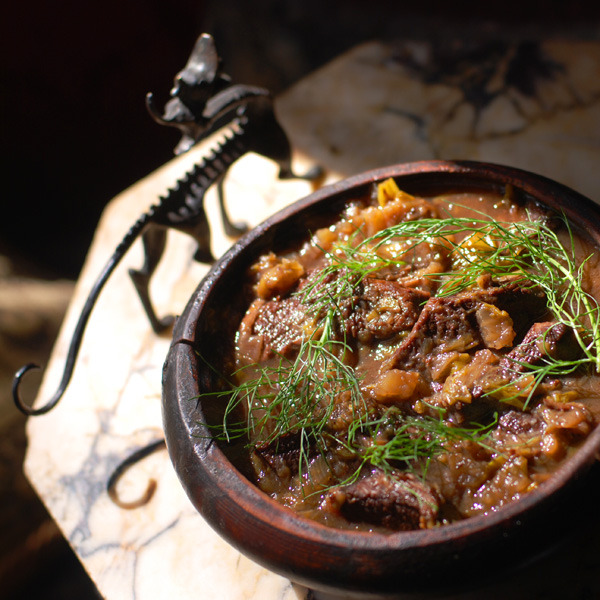
Vikings enjoyed a protein-packed diet. Almost 35% of their diet consists of protein from cows, chickens, pigs, ducks, goats, and sheep. They raised cattle primarily to supply milk, while chickens and ducks were raised for their eggs. Cows were only slaughtered once they finally stopped producing milk.
Occupation also determined the amount of meat a person consumed. Warriors ate a lot of meat as it provided them the energy they needed on the field. Meat was the most important element of a traditional Viking nattmal or evening meal. Different types of meats were added to stews together with herbs and vegetables. Horse meat was only prepared for sacrificial festivals and religious celebrations. Vikings preserved meats for the winter by placing them in vats filled with whey.
Viking Breads and Grains
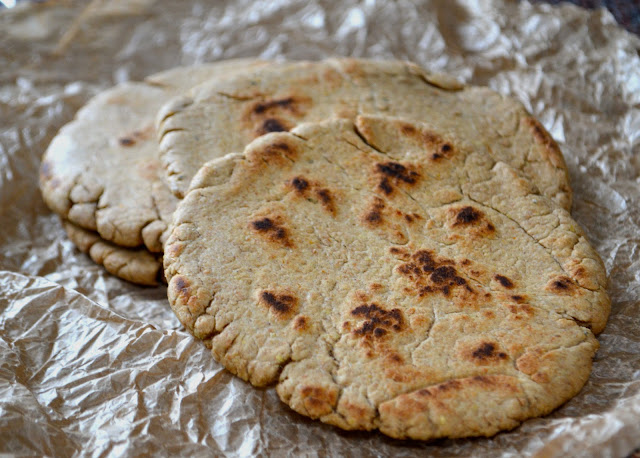
Barley, oats, and rye grew abundantly in Norway and other Scandinavian countries. Vikings across all social classes had easy access to grains; hence there was not much suffering from famine as during the Middle Ages. Barley flavored with hops was used to produce copious amounts of beer for warriors in their sea voyages. Grains were also used in preparing stews and porridge.
The invention of the frying pan introduced bread-making to Viking society. Small rolls were baked in open hearths. The first breads were unleavened, which turned them hard quickly. Sourdough soon became a staple when the Vikings started using fermented grains. Bread was usually eaten with stew and flushed down with ale or mead.
Porridge and Gruel, Viking Morning Staples
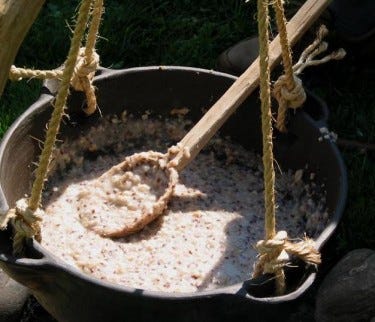
Gruel and porridge were morning food staples in the Viking Age. They were made from barley, buckwheat, millet, and oats. They can be sweet or savory with adding ingredients, such as fruits, nuts, butter, milk, honey, and meat.
Dagal or day meal was eaten one to two hours after chores had begun, mainly consisting of porridge. While men were served stew the night before, women and children often ate bread and porridge for breakfast. Gruel may seem unappetizing at first glance due to its grey, mushy appearance, but it was a hearty meal that filled women and children with energy for the long day ahead.
Fish and Sea Animals

The Vikings from the northern regions consumed more fish and other sea animals than those who lived in areas where grains and vegetables quickly grew. Fish were a standard part of meals among farmers and slaves. Back then, meats were reserved not only for warriors but for chieftains and wealthier families.
Fish that were commonly caught in the Scandinavian region by Vikings included herring, salmon, trout, eels, and cod. They were highly skilled in catching fish along rivers and out at sea. In preparation for winter, the Vikings extended the shelf life of fishes through various methods such as drying, salting, smoking, pickling, and preserving in whey. On occasion, Vikings also consumed whale meat, but only from whales washed ashore. They only hunted for smaller sea animals such as seals and walruses.
Hunting Wild Animals for Food and More
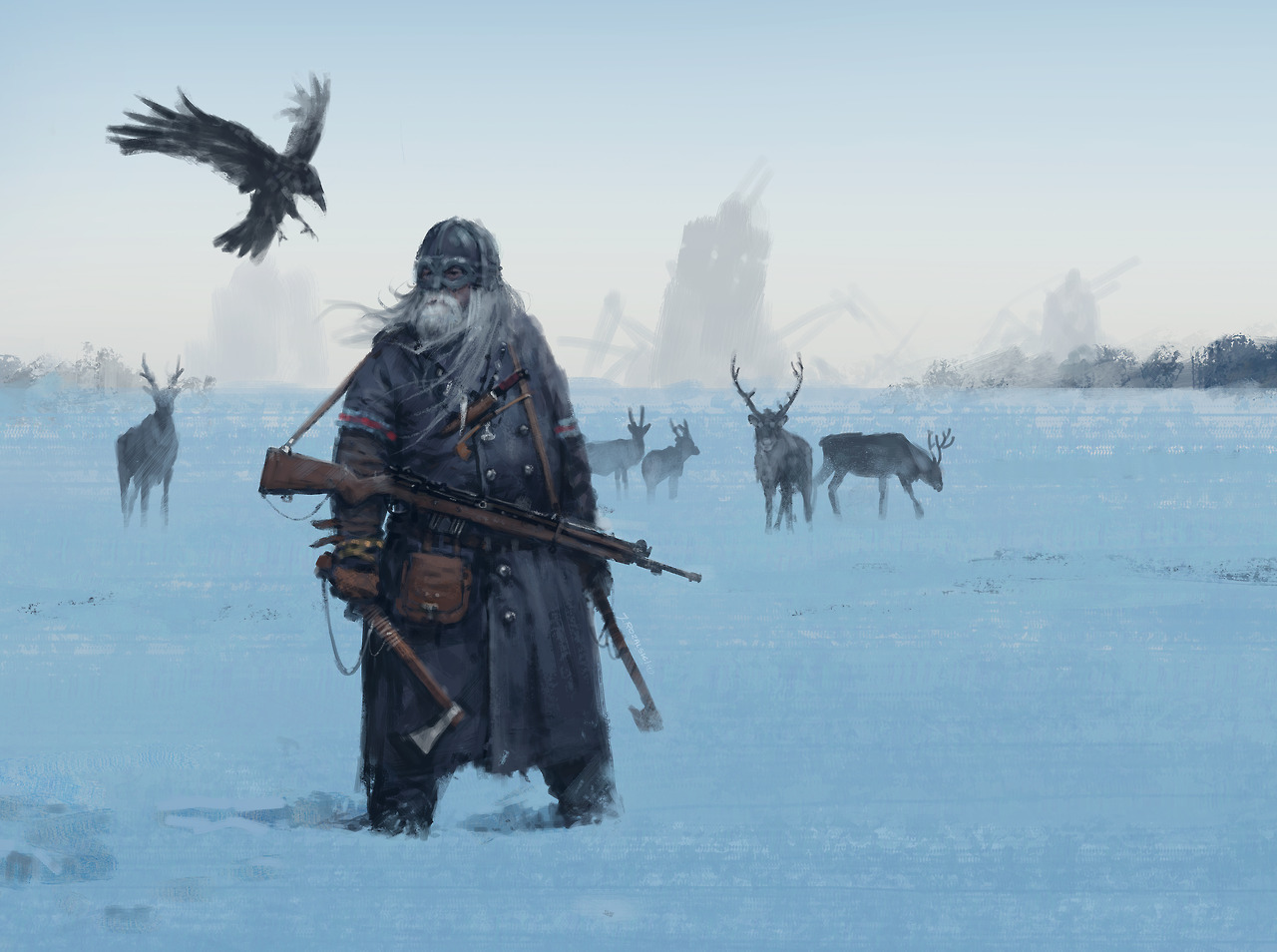
The outstanding hunting skills of Vikings allowed them to fend for food even when hundreds of miles away from home. They are proficient in using the bow and arrow and taking down large animals such as bears, reindeer, and wild boars. The Vikings used traps to catch smaller games, such as rabbits and squirrels. They hunted for all types of birds, except for hawks and falcons that they trained to retrieve game worth eating. The spoils of the hunt were either used to make stews or roasted over an open fire.
Hunting for sport was only reserved for the Viking elite. Wealthy families hosted hunting parties for family and friends for special occasions. The Norsemen were also ingenious as they used every part of a wild animal. The fur was used to make durable clothing, while bones were used to decorate their homes and weapons.
A Wide Array of Vegetables

The Scandinavian region where the Vikings lived only had seasonal vegetables. This means they enjoy an abundance of certain types of greens at some times of the year and have had low amounts for the remaining months. Historians unearthed stews containing remnants of an assortment of vegetables, including peas, beans, cabbage, kale, gale, onions, garlic, leeks, turnips, and carrots.
Apart from the ones they cultivated in their fields, they also foraged for veggies in the wild. The most common wild veggies the Vikings used to add flavor and texture to their meals included nettle, docks, cresses, and lamb-quarters. Apart from being essential ingredients in main dishes, some veggies were also used for medicinal purposes. For instance, the Vikings used onions to diagnose specific types of illnesses.
Fruits and Nuts for Main Meals and Snacks
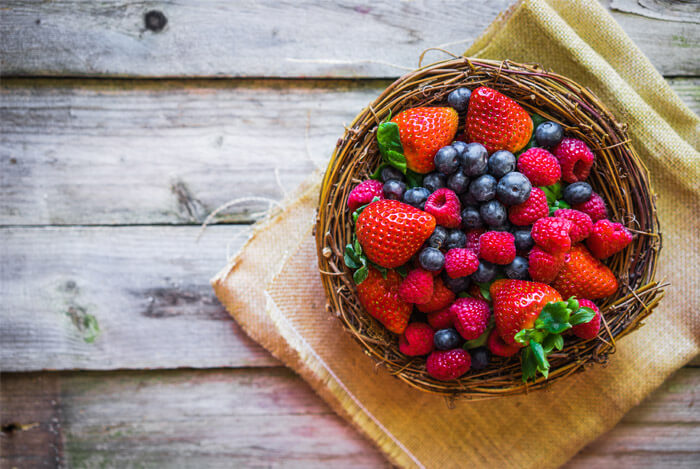
Viking farms and gardens in the Middle Ages typically grew different types of fruit-bearing trees such as apples, pears, and cherries. Then, in the summer, they harvested all kinds of berries like sloe berries, lingonberries, bilberries, cloudberries, and strawberries, to name a few.
The surrounding woods supplied the Vikings not only with fruits but with walnuts. Hazelnuts and other nuts originated from foreign lands but were eventually integrated into Scandinavian cuisine. As honey was the only sweetener the Vikings used in ancient times, fruits such as apples, cherries, and berries were used for food preparation. These fruits added depth, sweetness, and texture to porridge, sweet treats, and other delicacies.
Dairy Products that Vikings Loved

Besides beer and mead, the ancient Vikings loved drinking milk, buttermilk, sour milk, and whey. So, they raised cows, sheep, and goats to produce milk for daily use. In most cases, these animals had milk until the age of ten.
Other dairy products, including butter, yogurt, and cheeses, were created from regular milk. Scandinavian women churned for many hours to produce butter used in stews, soups, bread, and porridge. The cheeses that the Vikings enjoyed were high in fat and featured a similar consistency, texture, and flavor as mozzarella or paneer. Gamalost is a popular cheese variety among Viking warriors due to its supposed aphrodisiac effect. Over time, the Norsemen mastered cheesemaking and soon stored their cheeses for long periods without refrigeration.
Contents
- 1 Herbs and Spices
- 2 Beer, Mead, and Wines
- 3 Stewed Meats Helped Build Viking Strength
- 4 Viking Breads and Grains
- 5 Porridge and Gruel, Viking Morning Staples
- 6 Fish and Sea Animals
- 7 Hunting Wild Animals for Food and More
- 8 A Wide Array of Vegetables
- 9 Fruits and Nuts for Main Meals and Snacks
- 10 Dairy Products that Vikings Loved